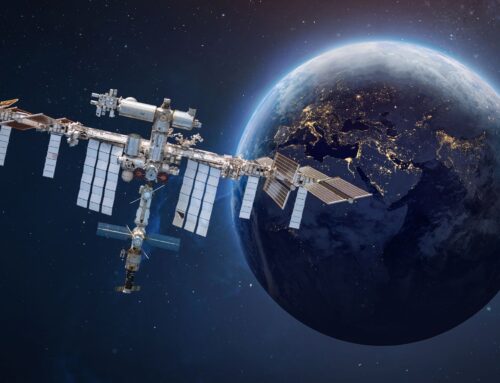Currently, over 1,500 satellites are floating in space above Earth. These revolutionary innovations offer a wide breadth of data and other services critical to human life, including advancements in environmental protection, education, public health, food security and more.
As witnessed by the proliferation of numerous innovations like GPS, space tech doesn’t just improve the efficiency and effectiveness of space missions; it also improves life on Earth. The NewSpace sector has utilized these resources to help evolve today’s space vehicles and missions, but also to provide information and education needed to negate various risks.
Today, billions of dollars in capital are now spent on boosting the new space economy, particularly space startup companies. They offer recent advancements and expanded tools to the existing commercial space sector, like communications and remote sensing. Others are looking to advance our progress in the stars to develop innovations in launch services, human spaceflight and exploration. Others are seeking to harness game-changing tools that will help humans mine asteroids.
In looking at developing trends, two focus areas remain key to the space economy’s continued success: affordability and sustainability.
Space Affordability
The companies, government agencies and other groups that are developing new space technologies and capabilities are expected to spawn massive benefits in the future.
On the positive side, it leads to innovation and better access to satellite services. It has also led to more affordable equipment. The democratization and marketing of the space industry are evident by the growth of reusable rockets and CubeSats. In these areas, space hardware is offered at lower prices that have attracted a growing customer base like agencies, universities and schools, institutions that have also fostered the creation of space startups.
System performance is relatively limited and constraints come from hardware size, limiting optics resolution or the amount of power generated. This led to the development of deployable structures to package relevant features in smaller payloads to send them into space to achieve a more optimal level of performance. However, technical issues that affect smaller mass satellites and CubeSats present challenges, especially for platform stability, a crucial aspect for all missions supporting optical payloads with high-resolution equipment. As ground testing and modeling to precinct in-orbit performance can be inaccurate, it relies more on a large margin. For instance, active control of micro-vibrations can cause suboptimal imaging that is still difficult and expensive to enact, especially in the lower end of the market.
Today, there is still a need for higher quality products that include hardware that maintains affordability. This remains a critical area that space companies are working to improve to make space an increasingly achievable reality.
Space Sustainability
However, as the NewSpace sector grows and diversifies, the new activities can antagonize current challenges that hinder long-term sustainability in space. Those issues include on-orbit crowding, radio-frequency interference, excess space debris and escalating geopolitics conflicts and relations on Earth. For the space sector to succeed, sustainability must remain a vital focus for the industry.
Some initiatives are already tackling some of these issues. For example, the United States has spearheaded a nonprofit organization, The Secure World Foundation, that warns of close encounters between satellites and other space objects to satellite operators across the globe for free. The organizations’ mission is dedicated to long-term sustainability of space exploration. They have published a Handbook for New Actors in Space that outlines the fundamental principles, laws, policies and practices for peaceful, safe and ethical activities in space.
The UN has also addressed the underlying challenges to a sustainable space economy. The organization’s Committee on the Peaceful Uses of Outer Space (COPUOS) has developed a best practices guide to support long-term sustainability in space. In June 2016, an initial 12 guidelines were approved by the Committee’s 84 member states.
Much work still needs to be completed to integrate sustainable practices as we expand humanity’s presence and innovations in space. While in-space activities and our development of technological advancements hold much promise, we must prove we can do it affordably and sustainability for the NewSpace sector’s longevity. Governments, industry experts and civil society must actively collaborate to develop and implement solid guidelines to improve space governance to support the growth of the future space economy.






